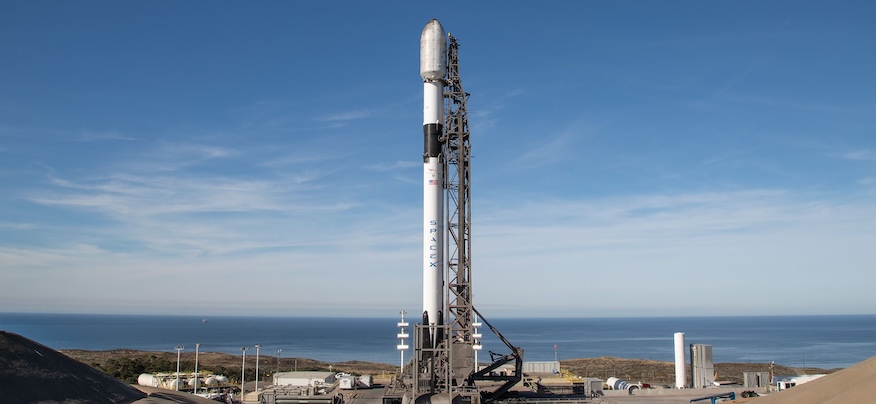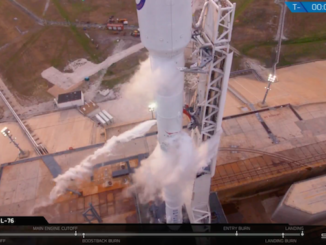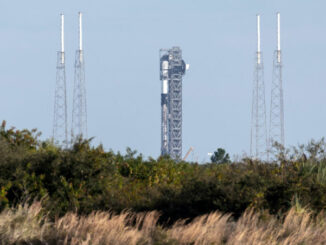
Update 9:45 p.m. EST: The launch is now scheduled for December 28 at 9:09 p.m. PST (12:09 a.m. EST, 0509 UTC).
Update 1:13 a.m. EST: SpaceX delayed the launch until Friday night at 9:19 p.m. PST (12:19 a.m. EST, 0519 UTC).
Original story:
SpaceX is looking to rebound from a week of scuttled launches with a Falcon 9 launch from California. The Starlink 7-9 mission will feature another batch of 21 satellites heading up to low Earth orbit, something that has become almost routine for the company.
However, this late night Friday mission is unique in that it will include the first six Starlink satellites that feature direct-to-cell capabilities. SpaceX stated that the new function “will enable mobile network operators around the world to provide seamless global access to texting, calling and browsing… on land, lakes or coastal waters.”
Liftoff of the Falcon 9 rocket supporting the mission is targeting the opening of the launch window at 9:19 p.m. PST (12:19 a.m. EST, 0519 UTC). Spaceflight Now will have live coverage of the mission starting about 30 minutes prior to liftoff.
This direct-to-cell promise for the Starlink network is the beginning of a promise announced by SpaceX founder Elon Musk during an event in August 2022 with T-Mobile CEO and President Mike Sievert at Starbase in Texas.
Musk described the capability as a “massive game changer” that would eliminate dead zones in even the most remote parts of the world.
“This really is a big deal,” Musk said during the presentation. “Even if an entire region or country lost connectivity because of a severe hurricane or floods or fires or tornados, earthquakes… even if all the cell towers were taken out, your phone would still work.”
According to a Nov. 30, 2023, email sent to Kathyrn Medley, the acting division chief of the Federal Communication’s (FCC) Satellite Licensing Division, SpaceX anticipates launching “approximately 840 direct-to-cell capable satellites over the next 6 months, with additional launches continuing after that period.”
Jameson Dempsey, SpaceX’s director of satellite policy and the author of the email, wrote that the planned and future launches would “ensure that we can launch a critical mass of satellites in time to deliver commercial service later in 2024.”
“As such, while we understand that the Commission may limit our experimental authority to the satellites we expect to launch and testing the next 6 months, we request that the launch license include authority for all 7500 satellites in our direct-to-cell modification application,” Dempsey wrote.
Sievert noted during the August 2022 event that the upcoming service in the U.S. would use the existing T-Mobile mid-band PCS spectrum.
“That allows us to then dedicate that, working together, to the constellation that Starlink operates so that we are seeing those satellites from every corner of the country,” Sievert said. “If you have a clear view of the sky, our vision is you’re connected.”
“Your phone doesn’t know it’s connecting to space. It will scan for its home network, it’ll scan for terrestrial roaming partners as well,” Sievert added. “And if it fails to see those things, it will scan again and it will connect to the authorized connection from the satellite and it’ll think it’s connected to a cell tower because that phone is using industry standard technology communication protocols and it has the spectrum already built in. At least, the vast majority of phones in circulation today do.”

In addition to T-Mobile as a U.S. service provider, SpaceX said it has partnered with companies in Australia, Canada, Japan, New Zealand and Switzerland.
Originally, the plan was to launch the service using the Starlink V2 satellites, which may still end up hosting the majority of the on-orbit antennas. However, because of their size they would need to launch using Starship.
Musk said during last year’s event that the antenna would be about five or six meters on one side or roughly 25 square meters. He noted that the Starlink V2 Mini satellites would need to work as a holdover solution, if Starship were “delayed longer than expected,” which turned out to be the case.
The six direct-to-cell satellites along with the 15 regular Starlink V2 Minis will launch aboard a Falcon 9 rocket with a brand new first stage booster. Following stage separation, the booster will land on the droneship, “Of Course I Still Love You” out in the Pacific Ocean.
Based on the photo published by SpaceX, the payload fairings that are housing the Starlink satellites are flight proven, but the company didn’t state prior to launch how many missions they’ve flown.




Fri = Dec 15th.. 9:19pm PST = less than 44 hours
the 16th is Sat..
Please…what is the correct info…
The radio physics of regular terrestrial cell phones being able to connect through these low earth orbit satellites is a mystery. Normally these phones make connections to ground stations up to around three miles away. The satellites are around 300 miles away. In order to connect over that further distance, the cell phone will need to output approximately 400x the power required to connect with the closer ground station. This will likely drain the cell phones battery very fast, and create a very dangerous high radiation zone that should certainly not be placed anywhere near a users head. IOW, this isn’t a practical solution for todays terrestrial cell phones and will require the creation of a new generation of cell phones specifically designed to adequately handle the high-power/high-radiation required to use thr satellites as cell stations.
Bill is wrong. He is missing knowledge on radiation and that there are different types of radiation. Let’s base are opinions on actual science. Radiation from emitted from cell phones are harmless to humans. Stop treating radiation like the new “R” word.
RF is not good for the body even from current cell phones. That being said…
Why use a louder speaker when a better hearing aid is a better approach.
Actually, it isn’t about transmit power. It is about signal strength versus noise level. This includes antenna gain. This gain is large on these new satellites, also with large transmit power. Our cell phones need not do anything different than they have done for years, if the satellite makes up the difference via antenna gain/size, and/or transmit power and receive sensitivity.
The answer is here
“Liftoff of the Falcon 9 rocket supporting the mission is targeting the opening of the launch window at 9:19 p.m. PST (12:19 a.m. EST, 0519 UTC).”
Note the UTC time is on the 16th. So depending where you live the launch is either on the 15th or 16th.
The starlink satellites have very high gain, electronically steerable antennas. This gain applies to both the transmit and receive direction. So the mobile phone on the ground will not have to operate with unusually high power levels.
Interesting that I did not know about the timing of the launch yet so happened to be outside yesterday, Piedmont of N.C., 12/14/2023, photographing other things when I saw an odd missile, not a jet, looked exactly like the others that were sending up satellites previously, heading straight up into the sky due north in the southern sky, @ 5:13 p.m. It then headed northeast, which was also the same pattern we observed launching of satellites previously.
I have my amateur photos & videos if anyone possibly wants to see them.
Best regards,
Nerds
Weird!
Cool!
Good luck to SpaceX and to all those who have worked hard to make these Rockets keep reaching the stars. All the best to you.
One has to wonder what the max capacity of bidirectional user traffic the satellite can provide as a Macro so to speak with such a large horizon of population of accessability.
Take us home Zulu, space is the next frontier.embrace it
Bill get off the glue your cellphone right now can communicate with the gps satellites… so wtf are you on about?
Great can we turn on the setting from having democrats call anyone? It’s better off thru communicate to nobody during emergencies! 🙂